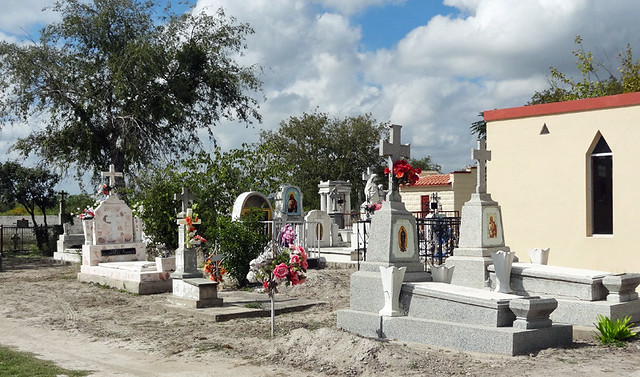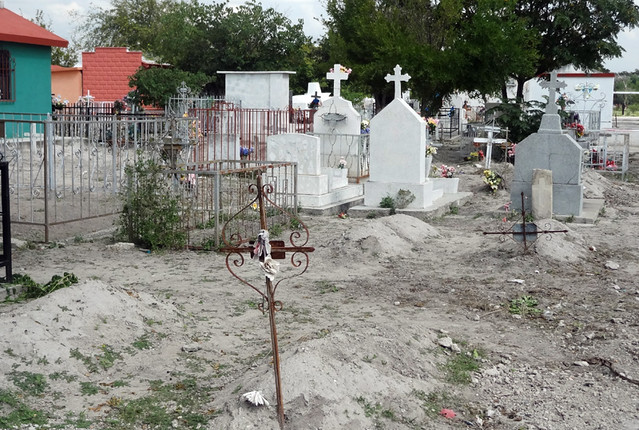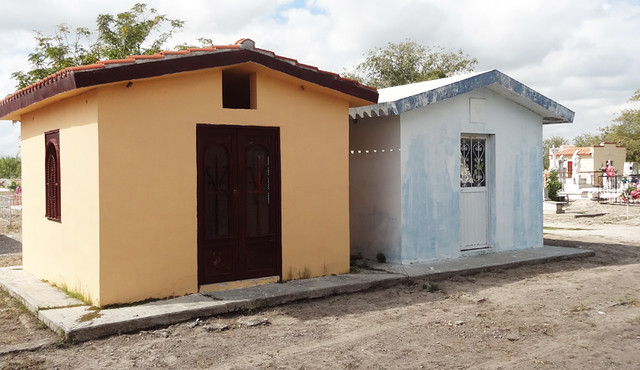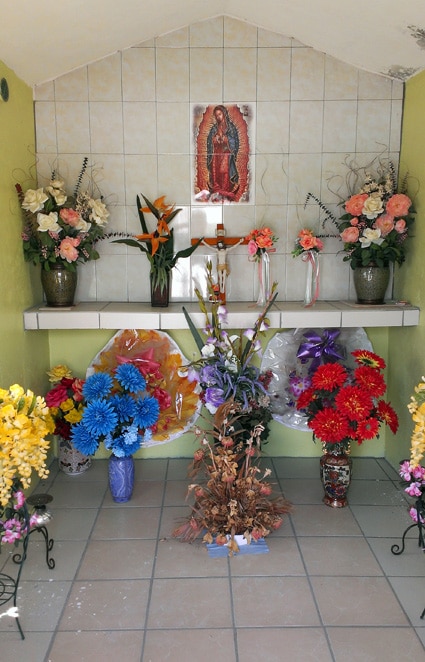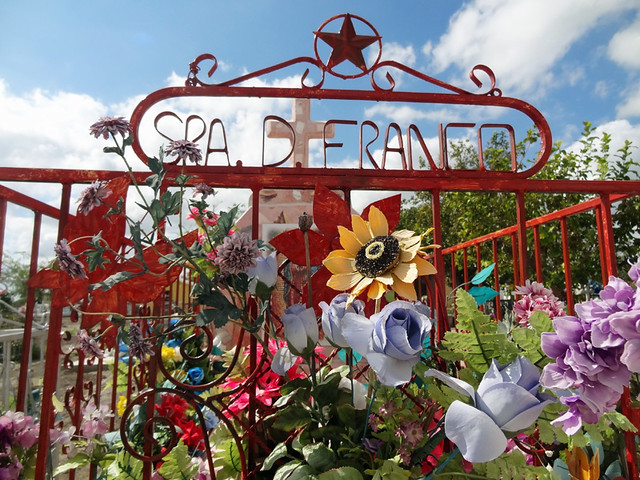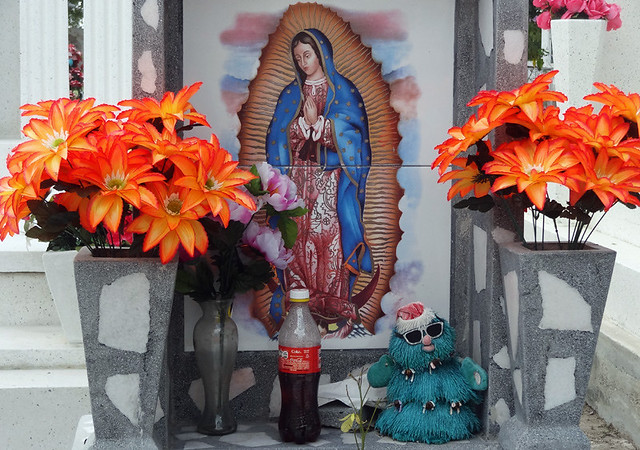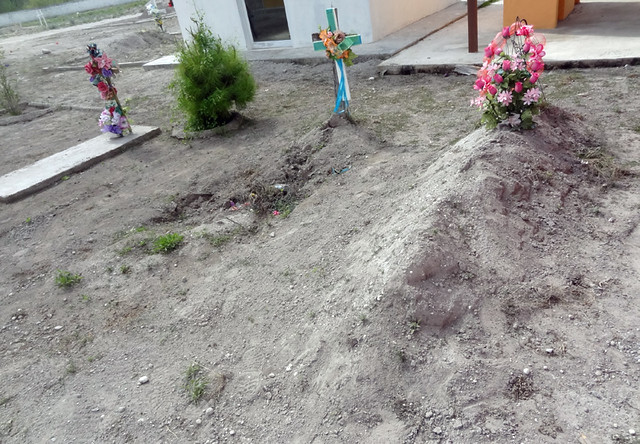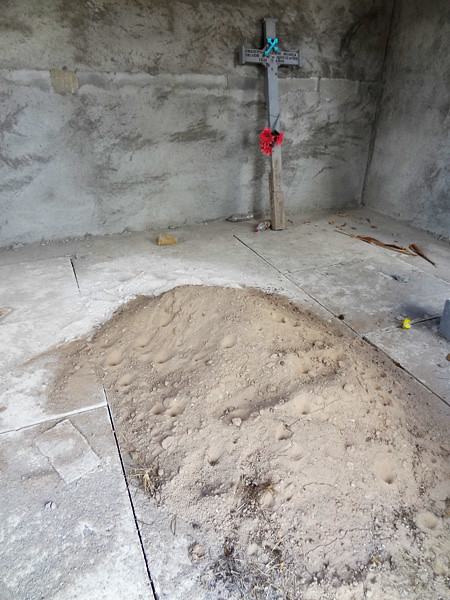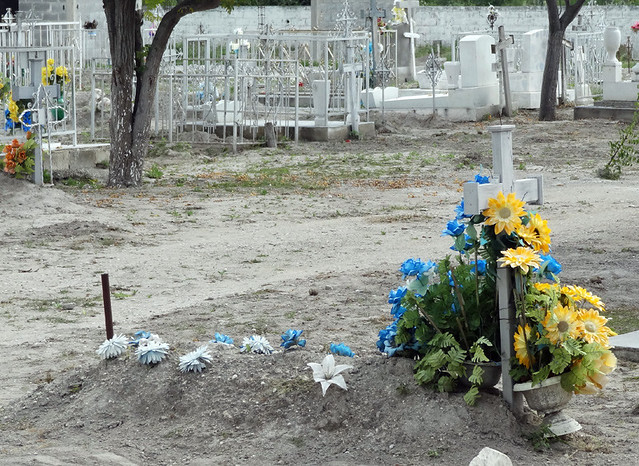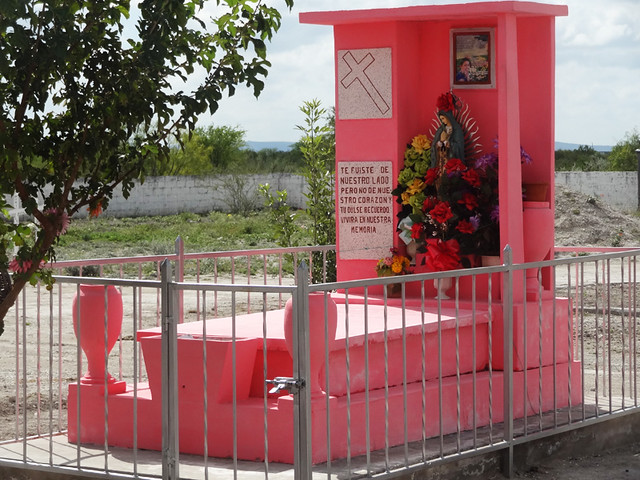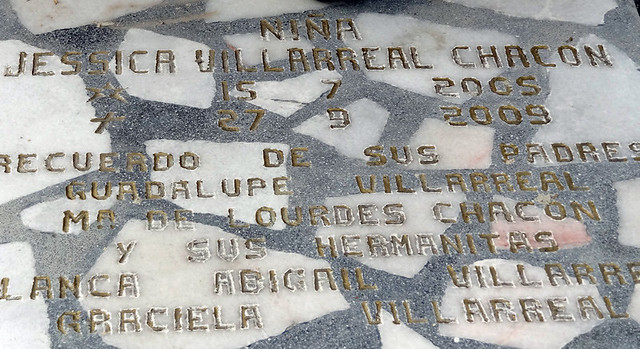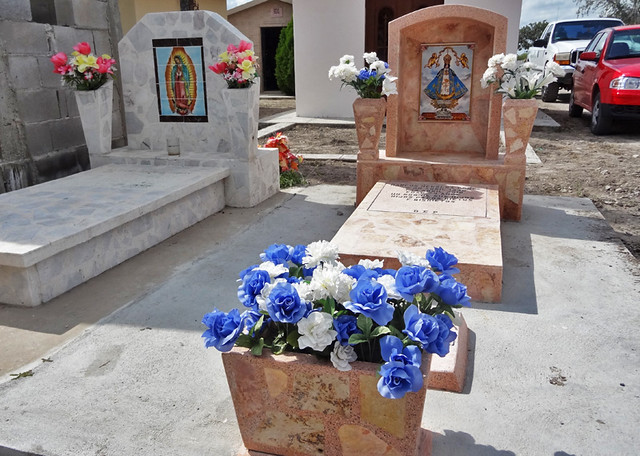When I visited a friend’s family in Villa Union, Mexico (pop. 6000), I was taken to two local cemeteries. It was the Day of the Dead weekend, and many families were stopping by to honor their loved ones and leave flowers and other items of remembrance.
I was encouraged to share some of these photos to reveal what a small-town Mexican cemetery looks like.
Scenes From a Mexican Cemetery: Tombstones and Houses
The first obvious thing I noticed was the lack of grass. American cemeteries tend to be impeccably landscaped, but in these hot, dry climates, it would be a big waste of water to try to grow grass here.
The lack of grass means there’s a lot of plain white and grey everywhere.
One upside to that is the fact that colorful flowers stand out even more in such an environment. I love this mix of light green, dark green, and orange flowers:
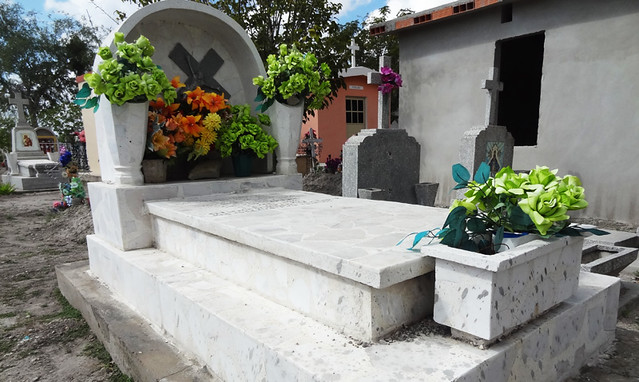
There were three different types of graves in the cemetery: The enclosed houses or chapels, the more modest outdoor graves surrounded by a fences, and the bare-bones outdoor graves with no fences or headstones and only mounds of rocks to mark the burial spot. The three grave styles exist side by side.
Residents with a bit more money tend to build the individual chapels, which usually stay locked. Family members with keys can open the structures and leave flowers and photos inside.
Here’s a glimpse at what one of these chapels looks like on the inside.
The outdoor graves have a bit less privacy and are more like typical American gravesites.
At some of the graves, family members leave some of the deceased’s favorite items, like stuffed animals and Coke bottles. (This practice is very similar to the way fans interact with Andy Warhol’s grave in Pittsburgh.)
Families with dirt mound graves may not be able to spend as much to make the grave sites of their loved ones quite as pretty, but they are still placed with care.
This was an interesting sight: A dirt mound inside an open cathedral. Either the building was in the process of being finished, or perhaps someone ran out of money and was unable to finish the cathedral and decided to use the dirt mound method instead:
More Photos From a Mexican Graveyard
See more scenes from the Mexican cemetery in Villa Union, Coahuila below. It was fascinating to see these gravesites and the beautiful flowers. Every culture seems to deal with departed loved ones in their own unique way.
These cemeteries are found in the Coahuila state of Mexico, which borders Texas. The cities of Piedras Negras, Mexico and Eagle Pass, Texas border each other. This is what it’s like to cross that border by car.
If you make it to Piedras Negras, be sure to check out Plaza de las Culturas, a nifty park and open space. This is a part of Mexico that a lot of visitors don’t see, so it was interesting to visit and share these sights.
Have you ever been to a Mexican cemetery, or one in another country?

